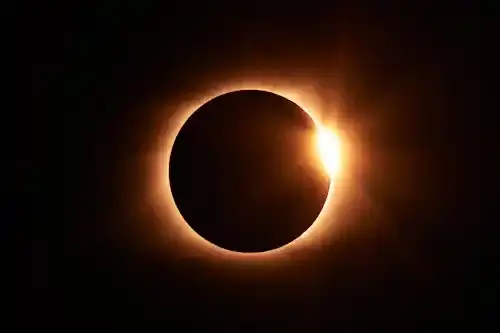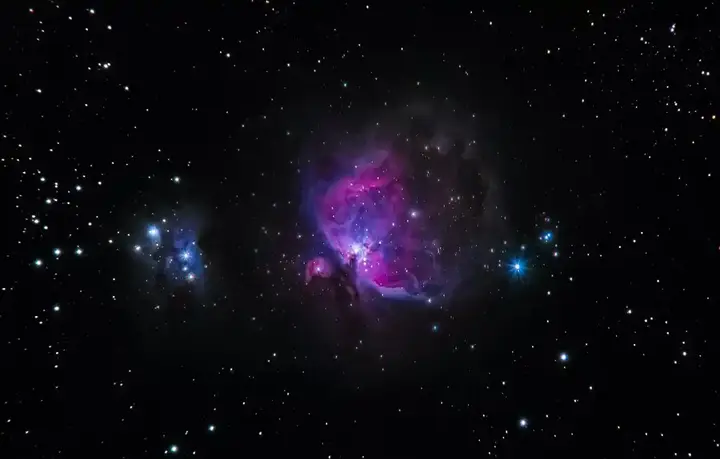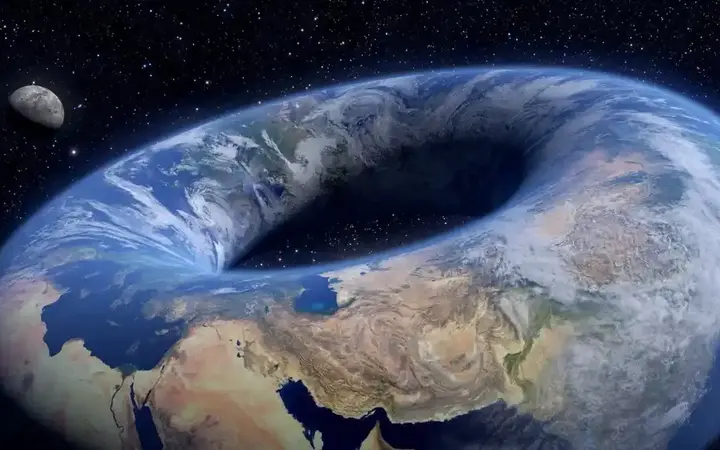What is the coldest place in the solar system?
The space is very cold. The core temperature of outer space is 2.7 Kelvin—minus 454.81 degrees Fahrenheit, or minus 270.45 degrees Celsius—meaning it's just above absolute zero, the point at which molecular motion stops. But this heat is not constant throughout the solar system. The so-called "empty" space — although not actually empty — is much colder than, say, planets, moons or asteroids, because there is (practical) nothing that absorbs energy coming from the sun. So, except for normal "empty" space, what is the coldest place in the solar system? And how do temperatures there compare to those on Earth?
Show key points
- Outer space has an extremely low temperature of just
- 7 Kelvin, barely above absolute zero, due to the near absence of matter that can absorb or retain heat.
- Scientists measure space temperatures mainly through detecting infrared and microwave radiation or estimating based on solar exposure.
- ADVERTISEMENT
- Accurate measurement of space temperatures is complex and relies heavily on assumptions and imperfect models, making all temperature values estimations.
- Research indicates that the double-shaded craters at the Moon's south pole may be the coldest known natural locations in the solar system.
- These lunar craters remain so cold because their floors are permanently shielded from both direct and reflected sunlight as well as thermal radiation.
- Estimates suggest these moon craters can reach temperatures as low as 25 K, which is colder than Pluto's average surface temperature of 4
- 4 K.
- The Oort Cloud might be even colder than the Moon’s craters, although its classification as part of the solar system is debated.
Space measurement

First, let's take a moment to consider exactly how cosmic temperatures are measured. Ian Crawford, professor of planetary science and astrobiology at Birkebeck, University of London in the UK, told Live Science in an email: "Temperatures can be measured by monitoring the intensity of infrared and microwave radiation emitted from surfaces. In the absence of such measurements, temperatures can be estimated based on the amount of sunlight they receive." However, taking cosmic measurements is not always simple. According to Don Polako, professor of astronomy at the University of Warwick in the UK, "There is nothing clear in astronomy, mainly because you are always watching, rather than interacting." So, although there are accurate ways to measure temperatures in space, there will always be room for improvement. "Temperatures are estimates," Polaco said. The numbers you calculate depend on how well your assumptions really are and how detailed the physical model you are using." So, with these points in mind, what is the coldest place in the solar system, at least according to current data? Maybe it's Pluto, given its distance from the sun? In fact, the coldest place may be closer to home.
Recommend
To the moon

In 2009, the Lunar Reconnaissance Vehicle, a NASA robotic spacecraft designed to help scientists better understand conditions on the moon, provided data suggesting that the "shaded craters" at the moon's south pole may be the coldest place in the solar system. This theory was later reinforced by graduate student Patrick O'Brien and his advisor Shane Byrne, planetary researchers at the University of Arizona. During a lecture at the 2022 Lunar and Planetary Science Conference, O'Brien and Byrne suggested that "twice-shaded lunar craters" may indeed be "the coldest locations in the solar system." According to O'Brien and Bern, a crater can be considered shaded twice if it is "protected not only from direct solar lighting but also from secondary heating sources," such as "solar radiation reflected from nearby bright spots as well as thermal radiation emitted from those warm roofs." Polaco added that the "double-shaded" nozzles "have high enough edges so that sunlight does not reach the floor of the nozzle," which is why they are so cold. O'Brien and Byrne's research suggests that because these "permanently shaded areas" have been "protected" from solar lighting for billions of years, their craters may contain "fine cold traps" that contain "not only water ice, but also more volatile compounds and elements," such as carbon dioxide, carbon monoxide, dinitrogen and argon. According to O'Brien and Bern, these craters are estimated to have a temperature of about 25 K (minus 414.67 F, or minus 248.15 degrees Celsius), but they may be colder. Crawford is confident in the validity of the research. "I'm sure this is the coldest temperature in the indoor solar system [from Mercury to Mars] and also colder than Pluto's estimated average surface temperature," he said. Pluto's average surface temperature, in context, is 40.4 K, which is equivalent to -386.95 F or -232.75 degrees Celsius, according to NASA. However, Crawford said these double-shade lunar craters may not be as cold as the Oort cloud, an icy space debris sheath located far from Neptune's orbit. He noted that the distinction depends on whether we include the Oort cloud when discussing the solar system. The Oort cloud is both "the most remote region in our solar system" by NASA, but it is also "outside" our solar system.
Earth Comparisons

On Earth, even the coldest and harshest temperatures in Antarctica are much higher than the craters of the Moon or the Oort Cloud. The coldest Earth's temperature ever recorded — recorded on July 21, 1983, at Russia's Vostok research station in Antarctica — was minus 128.6 F (minus 89.2 Celsius), according to the World Meteorological Organization's World Weather and Climate Archive. However, scientists have artificially created lower temperatures than those that occur naturally on Earth, in lunar craters or even in the Oort cloud. Last year, a team of German researchers broke the record for the coldest temperature reached in a laboratory: an extremely cold temperature of minus 459.67 F (minus 273.15 degrees Celsius), which they achieved by "dropping magnetized gas 393 feet (120 meters) below a tower." But when it comes to naturally occurring temperatures, the darkest and darkest parts of our moon are highly likely to have the lowest temperature in our solar system – depending, of course, on how you choose to rank the Oort cloud.
![]()
5 electronic games to develop your skills and intelligence
Discover how video games like SimCity, Stardew Valley, and Gorogoa can sharpen your mind, boost creativity, and help with planning and decision-making—all while having fun. Not all games are just for play; some are powerful tools for personal growth and learning. more- ADVERTISEMENT
![]()
3 skills in demand in the labor market to get a job
3 Skills required in the labor market to get a job more- ADVERTISEMENT
![]()
Extremely large telescopes: the next big thing in astronomy
Giant telescopes like the upcoming ELT and GMT are set to unlock deep cosmic secrets—from the first galaxies to possible signs of life on exoplanets. These powerful tools promise stunning discoveries and a clearer understanding of our universe’s origins and mysteries. more- ADVERTISEMENT
![]()
Clothing Trading - Hidden Tetanus Discovery
Clothing trade can be highly profitable when you understand fashion trends, know your target customers, and offer quality products at affordable prices. Choosing the right type—like children’s or women’s wear—and selecting a smart location or online platform can boost success. Marketing and customer service also play big roles. more- ADVERTISEMENT
![]()
The most important job market skills - how to become a graphic designer?
Graphic design is a creative field where your imagination meets visual communication. It’s not just about art—it’s about problem solving, storytelling, and expressing ideas. With the right skills, passion, and patience, you can turn your love for design into a rewarding profession that AI can’t fully replace. more- ADVERTISEMENT
![]()
Do you know why hair becomes white with age and not skin?
White hair can show up early due to genetics, stress, vitamin B12 deficiency, or smoking. While aging is a natural cause, lifestyle and health factors also play a role. Sometimes, treating underlying issues like thyroid problems or vitamin deficiencies may help restore hair color. more- ADVERTISEMENT
![]()
Traditional Syrian Glass Blowing : A Timeless Craft
Traditional Syrian Glass Blowing : A Timeless Craft more- ADVERTISEMENT
![]()
75% of the global diet is produced by just 12 plants and 5 different animals
Our diets rely on just a few crops, making them fragile and less nutritious. Embracing lesser-known, diverse foods like millet and winged beans can boost health, support farmers, and protect against climate and crop threats. more- ADVERTISEMENT
![]()
Scientists wonder if the universe looks like a donut cake
Scientists are exploring the universe’s shape and structure, searching for signs of cosmic loops and mirrored galaxies. Using improved CMB maps and powerful telescopes, they aim to uncover if the universe is finite—and perhaps one day map it all, like a cosmic version of Google Earth. more- ADVERTISEMENT
![]()
What is the primary source of oxygen on Earth?
Cyanobacteria were the first to release oxygen through photosynthesis, sparking a massive rise in atmospheric oxygen that wiped out many anaerobic organisms. Today, tiny ocean microbes like Prochlorococcus are major contributors to Earth's oxygen—even more than trees—though most of the planet's oxygen is locked in solid compounds, not the air. more- ADVERTISEMENT





















